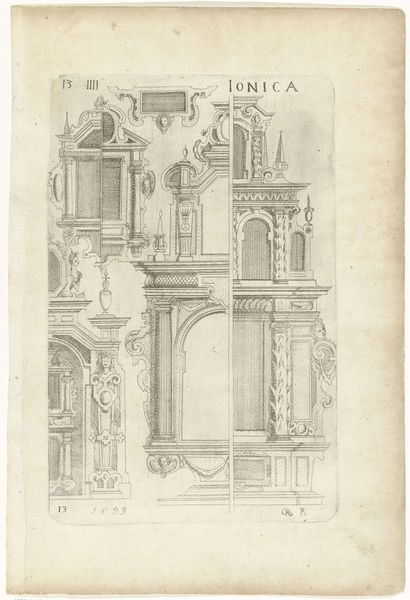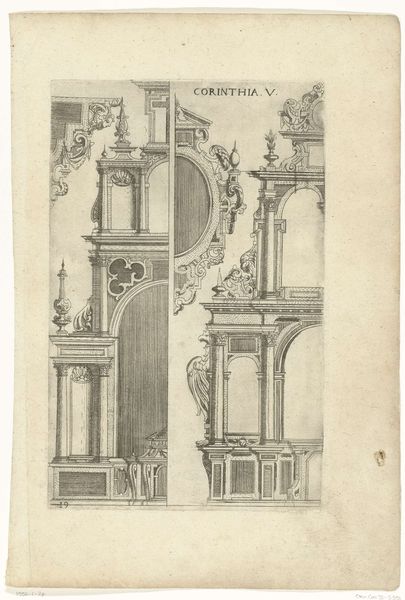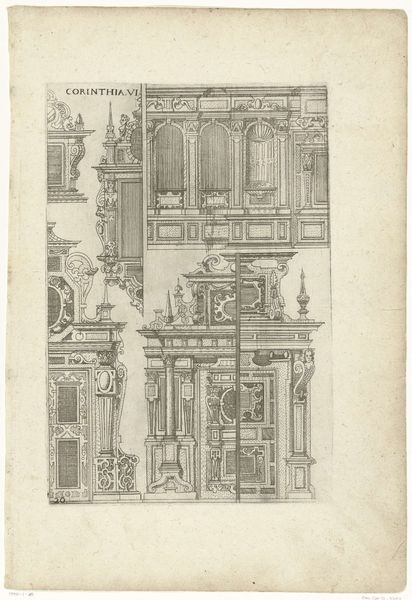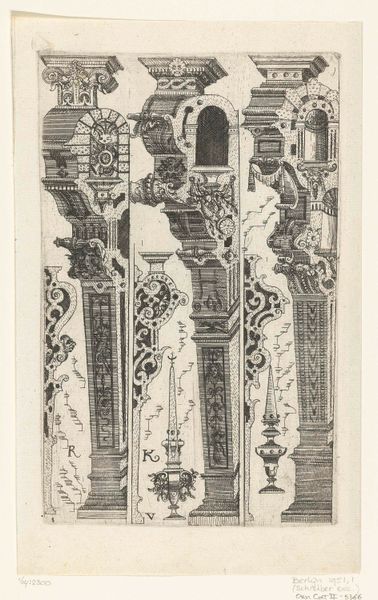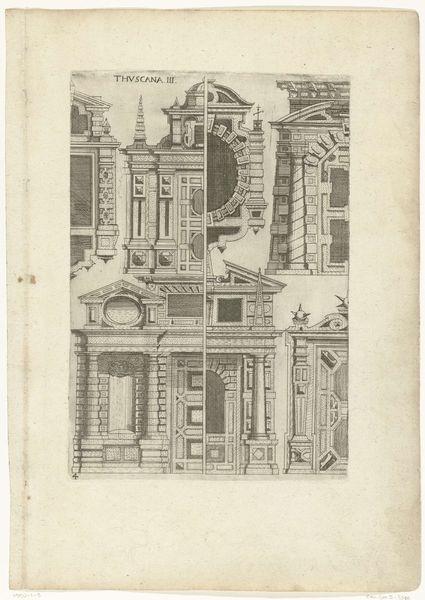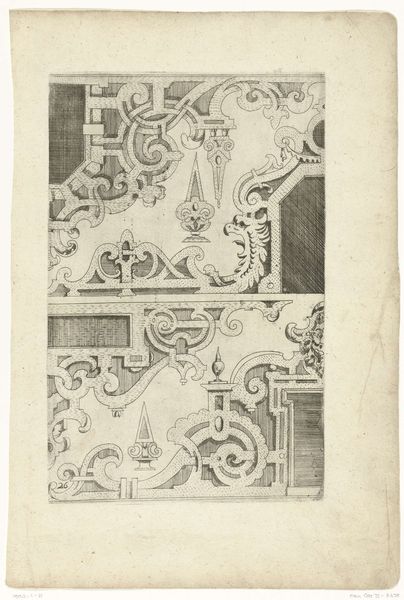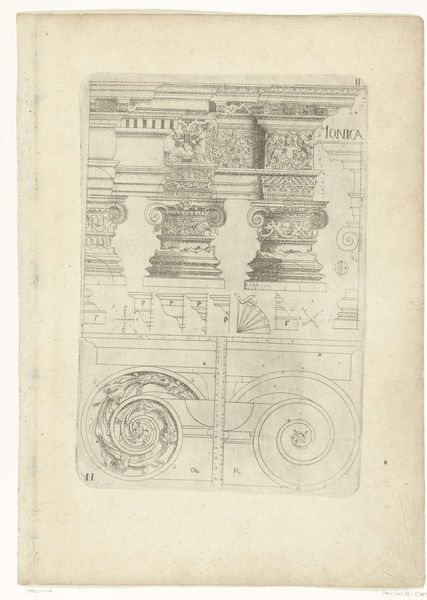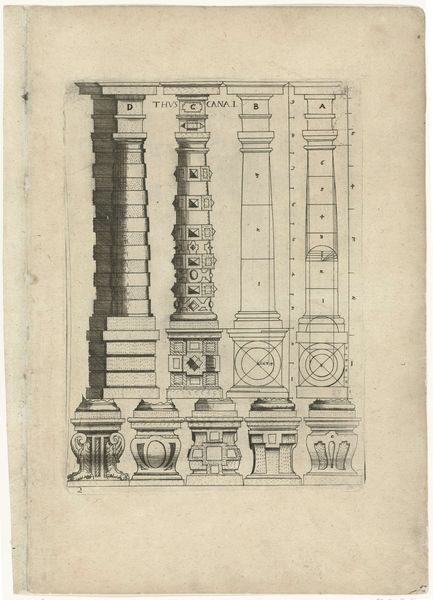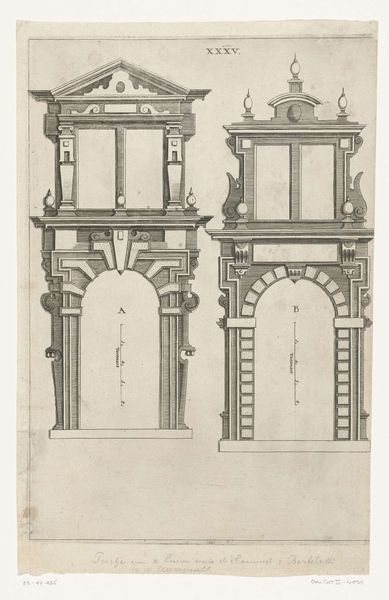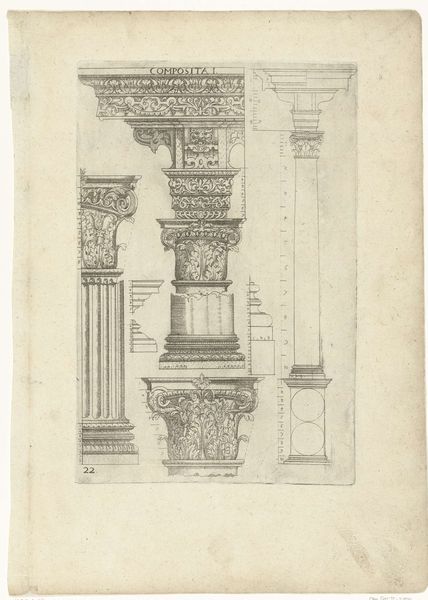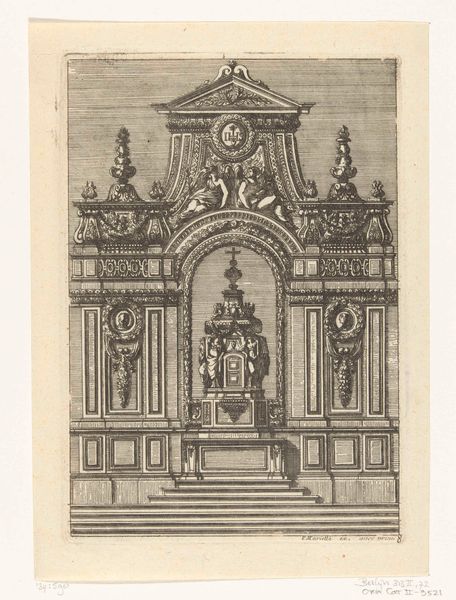
drawing, print, paper, ink, pen, engraving, architecture
#
drawing
#
aged paper
#
baroque
#
pen drawing
#
mechanical pen drawing
# print
#
pen sketch
#
old engraving style
#
classical-realism
#
paper
#
form
#
11_renaissance
#
personal sketchbook
#
ink
#
geometric
#
pen-ink sketch
#
line
#
pen work
#
sketchbook drawing
#
pen
#
history-painting
#
sketchbook art
#
engraving
#
architecture
Dimensions: height 289 mm, width 197 mm
Copyright: Rijks Museum: Open Domain
Gabriel Kramer produced this engraving, "Half altar, two half epitaphs and two half portals," sometime before 1611, showcasing architectural designs. The dominant visual element is the Doric order, a classical style characterized by its sturdy columns and simple capitals. This architectural language speaks of strength and stability, qualities that have been associated with civic and religious structures since antiquity. One can trace the echo of these forms back to the temples of ancient Greece. The Doric style, embraced by the Romans, was reborn during the Renaissance and continues to resonate through the ages. Notice the portals. Portals, as liminal spaces, have always held a powerful psychological charge. They represent transitions—physical, spiritual, and emotional. The archway, a recurring motif in Kramer's designs, evokes a sense of passage and transformation. Consider how this same form appears in triumphal arches, cathedrals, and even domestic doorways. We see here, the cyclical progression of symbols that continually resurface, evolving and taking on new meanings in different historical contexts.
Comments
No comments
Be the first to comment and join the conversation on the ultimate creative platform.
